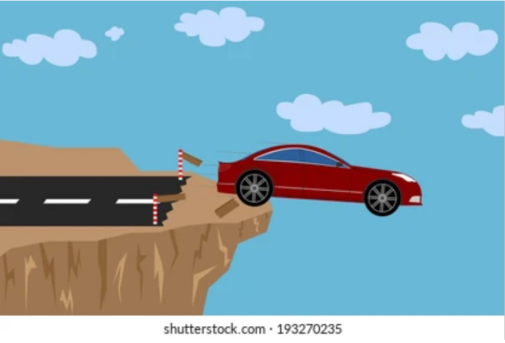Our story as humans—Homo sapiens—began about 200,000 years ago. And for over 99% of our time on earth we were foragers (hunter-gatherers). Because of that lengthy period as foragers, we became “designed” for that way of life (see this, p. 43). This book from 1988 discusses many aspects of that design. It neglects, however, to discuss the most important part of our design—the fact that we became designed to be a small-group species.1
Our lives began to change in significant ways about 12,000 years ago, when the Neolithic Revolution began, and agriculture began to replace foraging in some groups. Here are the important changes:
-
The sedentary nature of this new way of life fostered a growth in group size.
-
That development created a situation that enabled individuals with a tendency to dominate others to begin to do so. (Foragers had developed procedures to prevent that from happening; see this article.)
-
That led to the formation of social classes—and the exploitation of some by others that is a “feature’’ of social class systems.
-
-
That development, in turn, put our species on a downward course—discussed rather well in this 1979 book >Affluence and Discontent: The Anatomy of Consumer Societies, and illustrated by the “picture” below:
-

I would like to have found an illustration having a car going downhill—for our course, as humans, has been downward—and not one of “progress”—since the Neolithic Revolution. A car rolling down a hill will gain momentum, which will ensure that it does go over the cliff. Our current way of life is equivalent to that momentum for it makes likely that our species will “soon” go “over a cliff.” Let me explain.
The reason why we’re “headed for a cliff” is the global warming that has been occurring—especially since about 1850. The initial causes of that warming were our burning of fossil fuels and deforestation activities.
Those activities have, though, caused a new causal factor to enter the picture—the thawing of permafrost. There’s this:
Permafrost thaw is one of the gravest yet lesser discussed impacts of climate change. Permafrost covers 24 percent of the surface of land masses in the northern hemisphere and accounts for nearly half of all organic carbon stored within the planet’s soil. As long as this organic matter remains frozen, it will stay trapped in the permafrost. However, if it thaws, microbes will begin to eat the material, causing it to decay and releasing carbon dioxide and methane into the atmosphere. Even if a small fraction of these greenhouse gases are released, it will have major consequences on not only the Arctic, but Earth’s entire climate system, as they intensify global climate change.
That thawing likely explains the fact that global warming is now accelerating! Is “feeding on itself”! And therefore will likely be impossible to halt. So that at some point in the “near” future Earth will become unlivable for humans at all locations—and we will go extinct (along with many other species, of course).
Here’s a recent statement about our current perilous situation by 14 scientists:
We are on the brink of an irreversible climate disaster. This is a global emergency beyond any doubt. Much of the very fabric of life on Earth is imperiled. We are stepping into a critical and unpredictable new phase of the climate crisis. For many years, scientists, including a group of more than 15,000, have sounded the alarm about the impending dangers of climate change driven by increasing greenhouse gas emissions and ecosystem change (Ripple et al., 2020). For half a century, global warming has been correctly predicted even before it was observed—and not only by independent academic scientists but also by fossil fuel companies (Supran et al., 2023). Despite these warnings, we are still moving in the wrong direction; fossil fuel emissions have increased to an all-time high, the 3 hottest days ever occurred in July of 2024 (Guterres, 2024), and current policies have us on track for approximately 2.7 degrees Celsius (°C) peak warming by 2100 (UNEP, 2023). Tragically, we are failing to avoid serious impacts, and we can now only hope to limit the extent of the damage. We are witnessing the grim reality of the forecasts as climate impacts escalate, bringing forth scenes of unprecedented disasters around the world and human and nonhuman suffering. We find ourselves amid an abrupt climate upheaval, a dire situation never before encountered in the annals of human existence. We have now brought the planet into climatic conditions never witnessed by us or our prehistoric relatives within our genus, Homo (supplemental figure S1; CenCO2PIP Consortium et al. 2023).
As the authors of that article are academics, they are forced to be cautious in their pronouncements. However, there’s this article “out there” with the title “Humans may be extinct in 2026.” Thirty-six scientists have associated themselves with this site, and they are all identified and pictured in the article. They write under the name “Sam Carana’ to protect themselves from retribution by their employers.
It’s stated in this article that:
To secure a sustainable future, we must change how we live, in ways that improve the vital signs summarized by our graphs.
A conclusion that I reached in 1984, in this article—in which I presented a 5-wave strategy to bring about societal system change. Not having the financial resources to act on it, I didn’t; but I contacted dozens of individuals/organizations to make them aware of my proposal, in the hope that I would find someone interested in acting on it. Without receiving a single response so far, however!! It’s as if our species has a death wish/drive!! Perhaps had I contacted Bill Gates …. But a recent interview of him that I saw recently convinced me that he is utterly ignorant about our current precarious situation, so that … !
In the 1930s our national government instituted a “greenbelt” program that would “change the way we live” to some degree. But with “burn baby burn” President Trump as our current “leader” there is NO reason to expect this to occur now—with ecovillages being the sort of unit created.
Besides, it’s likely past time for our “salvation”!
Author is currently at a facility in Oak Creek, Wisconsin, for rehabilitation for a fall and dialysis (which he began on January 28 while in a hospital for another reason).
ENDNOTE:
1 This will be commented on shortly. Also see this article.










